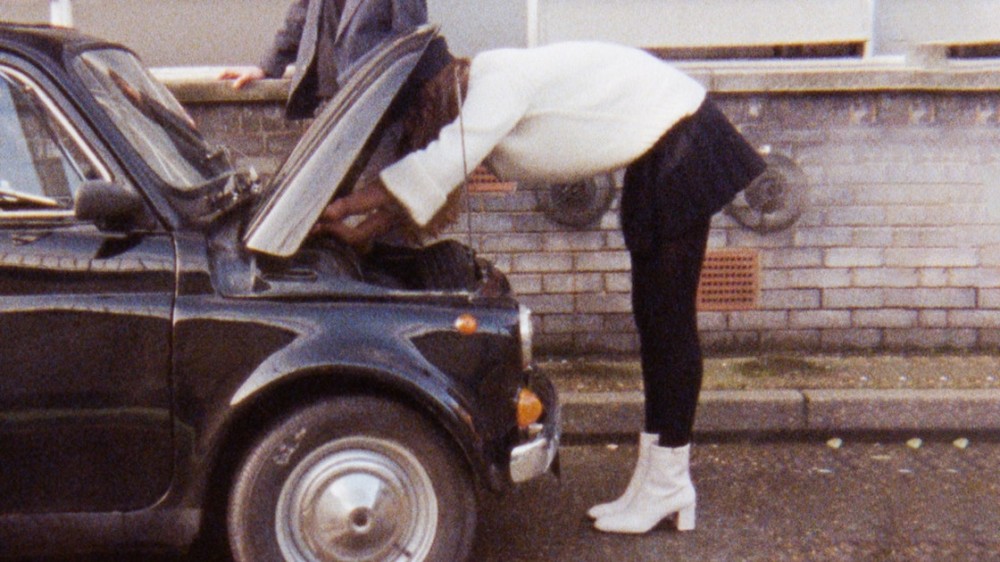
Why TikTokers are turning to the circus for fashion inspo
The clowncore trend has picked up pace in 2020, thanks to its gender-blurring aesthetics and escapist themes
Clowns and jesters have been around for as long as humanity has craved entertainment, and though their appearance across culture and continents may have transformed and evolved, they’re united in the polarised responses they elicit from audiences along the way. You either love them, vehemently despise them, or want to be one to the point you start incorporating clownish elements into your wardrobe – and right now, a growing number of teens are opting for the latter.
Though dressing the clown is nothing new, with circus-themed looks making their way onto the runway at Margiela, Dior, and more as recently as last year, right now, things are exploding on social media. Beginning as a beauty trend on Instagram, the aesthetic has mutated into a full-blown clowncore movement largely within the subcultural petri dish that is TikTok.
@swanmuse :•) #fyp #LetsFaceIt #IAmLost #WhatsUpDocChallenge #SkinCare #clown #witchtok #wlw #sapphic #lgbt #gec #clowncore #fashion #alt #fae #cottagecore #art
♬ stupid horse – 100 gecs & Laura Les & Dylan Brady
But what is it, exactly? Aesthetics.fandom.com – which is essentially Wikipedia for vibe checks – says the visuals include circus tents, rainbows, stickers, pompoms, gumballs, that worm on a string toy and… Pietro from Animal Crossing. According to the many TikTok accounts curating aspirational aesthetic videos, the look can be categorised by bright colours, clashing prints, rainbow hair, highlighted noses, beaded jewellery, ruffs, peter-pan collars, and circus-like graphic make-up. Occasionally, Joker references and Insane Clown Posse soundbytes pop up, but, overall, it’s less Pennywise the clown and more kid gone wild in a candy store.
With the #clowncore tag amassing over 48 million views and counting on the platform, one TikToker you’ll likely encounter while scrolling through endless #inspo videos is Jess Grillo. Otherwise known as froglady444, the 20-year-old New Yorker describes herself as a “frog jester who sings”. Having adopted clown-style at the age of 14, she has no problem with seeing herself used in these videos. “It’s been cool to see the aesthetic evolve over time and gain popularity to some degree,” she explains. “It’s funny, people always send me Pinterest posts of me that I definitely did not upload, but I love dressing up. Clowncore is super fun and expressive – you can look how you feel essentially.”
“It’s (something) fun that trans people like myself can to relate to, especially after I have had my identity made a punchline or been straight-up attacked over. It’s liberating to dress up knowing the real clowns are the people who decide to stay ignorant or hateful” – Anyeurcyst
Others echo Grillo’s sentiment, citing the aesthetic’s joyful, avant-gardism as a big draw – which, given the way 2020 has turned out, should come as no surprise. “I personally like the happiness that surrounds the aesthetic and the fact that I can become a new character each time,” confirms Kamran, 20, from Maryland. The make-up artist explains that while she wouldn’t consider herself 100 per cent immersed in clowncore, notably, some of her most popular looks from the past year have incorporated clown-ish elements.
Most recently, she turned herself into a colourful Pierrot – a downbeat, sadboi clown who originated in late 17th Century pantomime. “I think people are drawn to the style because it’s very unique and out there,” she explains, adding that, given clowns have “always been around”, there’s an extremely deep pot of reference points and inspirations to dip into, and influences to incorporate. “From what I’ve seen, it’s evolved from other subcultures such as Japanese Decora, Scene, and (Insane Clown Posse’s) Juggalos.”
@kasperklownn pls ignore my crusty lipstick lol ? #BeatsDaisyChallenge #foryoupage #lgbt #trans #alt #clowncore #clown
♬ follow me – ??Kaylanah??
With many considering clowncore a clear evolution of the e-girl and boy aesthetic, the trend also incorporates elements of rave, emo, kidcore, and beyond – and while a huge number of fans dive into kaleidoscopic bright clothes and make-up, plenty of others are opting for a monochromatic sad vibe instead. “I know lots of people who combine clowncore with other aesthetics like goth and punk. There are very few rules to clowncore which makes it very flexible,” explains Kasper Klown, who regularly wears clown and punk clothing. Dipping into the aesthetic back in 2018, the 20-year-old UK-based trans man – and ‘clown from a small town’ – appreciated the confidence boost dressing up gave him. “I love walking down the street and getting attention from people, it makes me feel a little bit famous to be honest.”
It’s apparent that the majority of the young people adopting the style are queer, which has often been true with past alternative styles in their beginnings. “I definitely think there’s a link between being queer and being alternative in terms of feeling like an outsider,” Kasper confirms. “I think clowncore specifically allows young queer people to experiment with colour and therefore loud queer expression. I feel like I look the most visibly queer when in clown because of the rainbow themes – I often describe myself as looking like a walking pride flag because of the colours.”
“I think clowncore specifically allows young queer people to experiment with colour and therefore loud queer expression. I feel like I look the most visibly queer when in clown because of the rainbow themes – I often describe myself as looking like a walking pride flag because of the colours” – Kasper Klown
TikToker Aneurcyst points to the ways in which typically femme and masc styles are blended together as the wearer chooses – and adds that gender stereotypes don’t exist in the circus tent. “Clowns are just clowns. There’s no gender associated with them,” they explain. “It’s (something) fun that trans people like myself can to relate to, especially after I have had my identity made a punchline and been straight-up attacked over. It’s liberating to dress up knowing the real clowns are the people who decide to stay ignorant or hateful.”
Despite the positivity of the movement, there’s still the mostly unspoken element of playing into people’s fears too. Coulrophobia is a legitimate phobia of clowns, sparked by the 70’s serial killer John Wayne Gacy who notably performed as children’s hospitals dressed as a clown which resulted in a wave of killer clown movies in the mid-80s. In a 2016 poll, Americans admitted to being more scared of clowns than climate change.
@pigeonmilky my natural habitat is the playland ballpit ngl #kidcore #clowncore
♬ original sound – coco + 19 + she/her
“A lot of people will create unsettling looks using darker colours and themes to set a whole different mood from the traditional happy clown aesthetic,” Aneurcyst explains when asked about their most recent refined clown look, which took over a year of careful planning. “I feel like the nostalgia and wonder surrounding the concept of clowns, as well as the occasional uneasiness for people who have a phobia of clowns has made it an interesting aesthetic for people to play around with and pick apart. There are very few boundaries.”
With the internet allowing the formerly rigid lines between subcultures to blur into one another, it seems much of clowncore’s appeal lies in its ability to blend into countless other trends: from dark academia to e-girl and boy aesthetics and beyond, those tapping into clowncore can go as hard or as tentatively as they like. Like many other trends it’s also all about escape. For those less-than-enchanted by the pastoral frills, nap dresses, and cutesy visuals of the cottagecore movement, dressing up like a clown and painting a cute glitter nose on their face offers them the chance to transform into someone else – and in a world that feels increasingly scary, who doesn’t want that?



